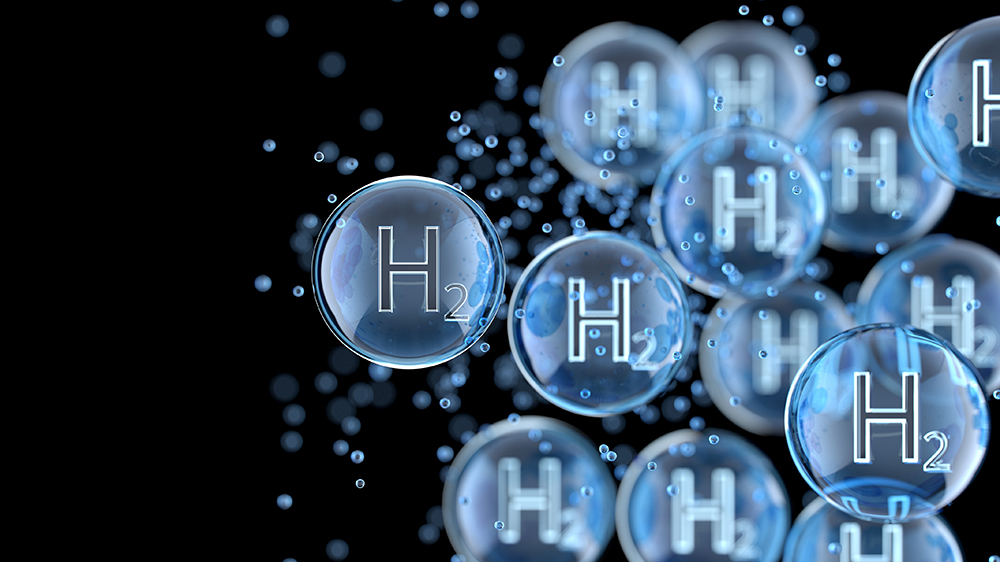
Multiple ambitious infrastructure construction projects are currently underway across the UK, including HS2 and the Thames Tideway super sewer project. This is good news for the sector, but when considered alongside net zero targets, site managers and specifiers must ensure these large projects do not become similarly large polluters, writes Chris Pais.
Construction professionals should prepare for green hydrogen energy becoming prominent as a ‘drop in’ option for powering projects. But what, specifically, do they need to aware of with this exciting technology?
The benefits
The benefits of hydrogen power are well documented, and awareness of these strengths can lead to more informed specification of power generation equipment.
For instance, hydrogen avoids availability issues that can hamper weather-dependent renewables such as wind and solar, as hydrogen can be made available just like conventional fuel. Similarly, as hydrogen can produce power using combustion technologies or fuel cells with zero carbon emissions and practically zero particulate matter (PM) and nitrogen oxide (NOx), the use of green hydrogen is more sustainable than fossil fuels.
With sustainability increasingly moving from a preference to a priority, and net zero deadlines moving ever closer, this benefit cannot be overstated. Hydrogen also has a high energy density which can make it attractive compared to other storage technologies such as batteries.
The practicalities
It must be noted that some hydrogen power generation technologies are not at the same level of maturity as conventional solutions yet, and development continues to address practical concerns.
“As hydrogen can produce power using combustion technologies or fuel cells with zero carbon emissions and practically zero particulate matter (PM) and nitrogen oxide (NOx), the use of green hydrogen is more sustainable than fossil fuels.”
As hydrogen is a very light molecule, it needs to be compressed to extremely high pressures (200 to 700 bar) or liquified to very low temperatures (-253°C) to be used as a practical energy carrier. Consequently, storage and transport of hydrogen can be challenging and expensive.
However, progress has already been made, with suppliers such as Aggreko soon able to offer power generation solutions that use currently available hydrogen delivery methods such as tube trailers and multi-cylinder packs as an energy source. Aggreko’s fuel handling systems, for example, are a plug-and-play solution that enable quick swapping of the fuel source without site power disruption.
Site stakeholders should also be aware that as a high-pressure and highly flammable substance, hydrogen cannot be left unattended should be handled with care. As it burns with a colourless flame which can be hard to detect with the naked eye, onsite personnel must guarantee that the necessary safety precautions are in place.
What’s available
In the context of power generation, there are several possibilities with hydrogen. For instance, Aggreko has developed hydrogen combustion gensets in partnership with CMB.TECH for use in temporary, emission-free power applications. This solution is Tier 4f/Stage V compliant without aftertreatment and results in near to no NOx and PM emissions.
Additionally, hydrogen can be used to power fuel cells, which convert the fuel’s chemical energy into electricity without a combustion process. These cells are therefore a very clean and efficient way of keeping construction equipment running. This is especially useful if this equipment requires low-noise operation, as is the case with many urban construction sites.
With this benefit in mind, suppliers including Aggreko are currently looking into how to further harness this technology. Specifically, equipment integrating battery storage and fuel cells is currently being trialled, ahead of these innovative solutions being rolled out to the construction sector.
Future innovations and updates
Of course, time does not stand still, and the legislative situation surrounding hydrogen technology remains. For example, though affordability has long been a barrier for hydrogen – with it costing three-to-five times as much as diesel – net zero pressures may soon see the UK follow the lead of states such as California in adopting subsidies.
When considered alongside the scrapping of the red diesel fuel subsidy for construction firms in 2023, it is key that stakeholders remain informed on the rapidly changing situation.
This also applies to the technology itself – as hydrogen is highly versatile, and can be converted into ‘carriers’ such as methanol. Interestingly, this substance is easier to transport and use as fuel, which is why development has continued around methanol-specific engines.
Taking this into account, Aggreko plans to demonstrate methanol-combustion engine by end of 2021, offering a low-carbon solution using green methanol. Construction professionals would do well, therefore, to seek out and expect updates on green power generation solutions.
For more information on how hydrogen can be harnessed in the construction sector, click here.
Chris Pais is senior manager – future technologies at Aggreko.











